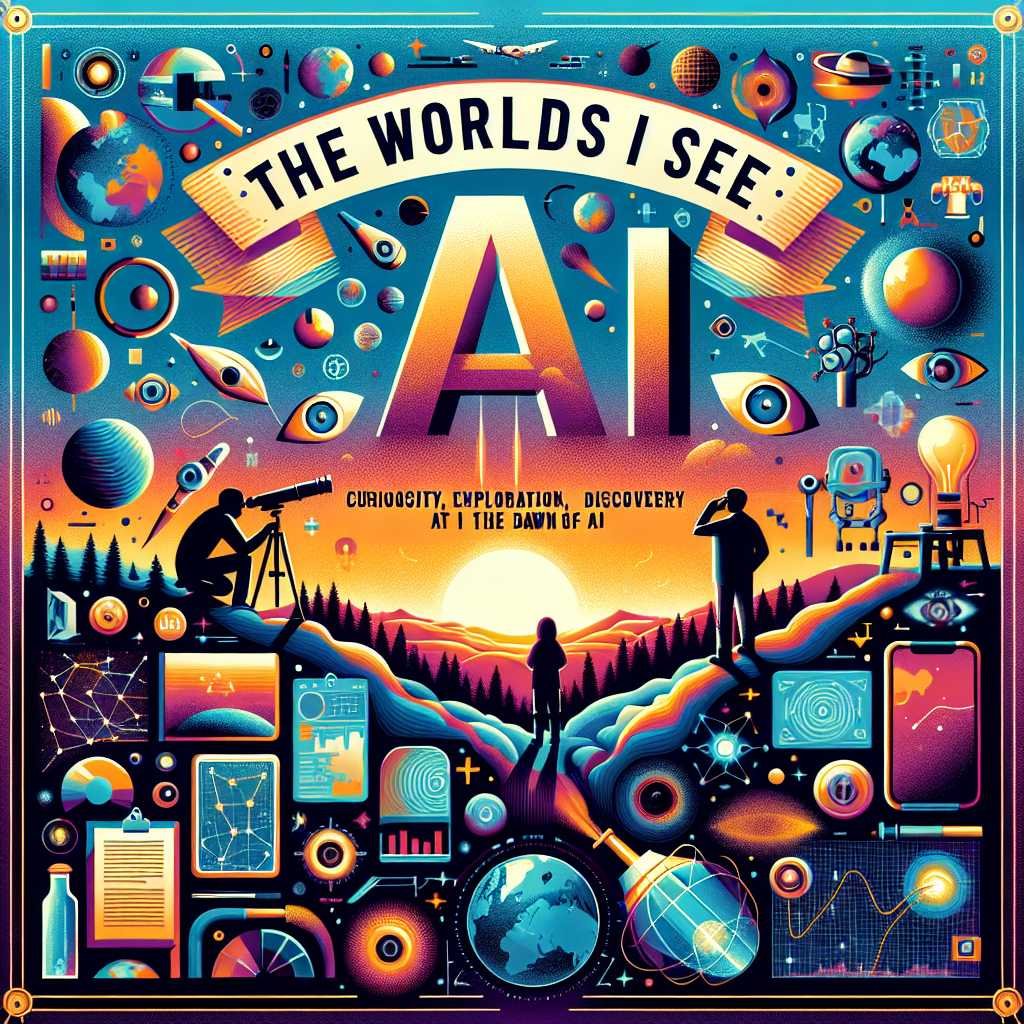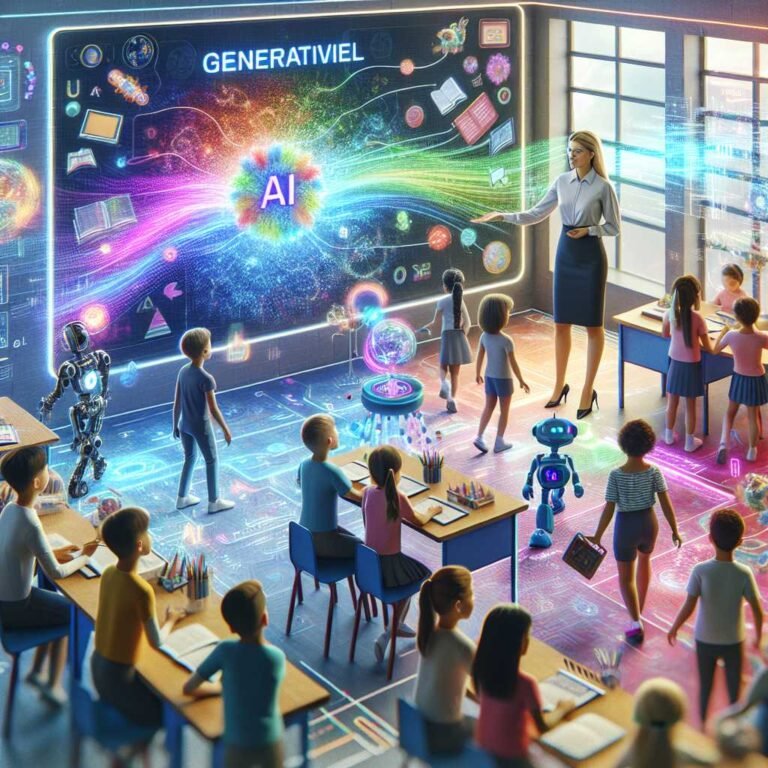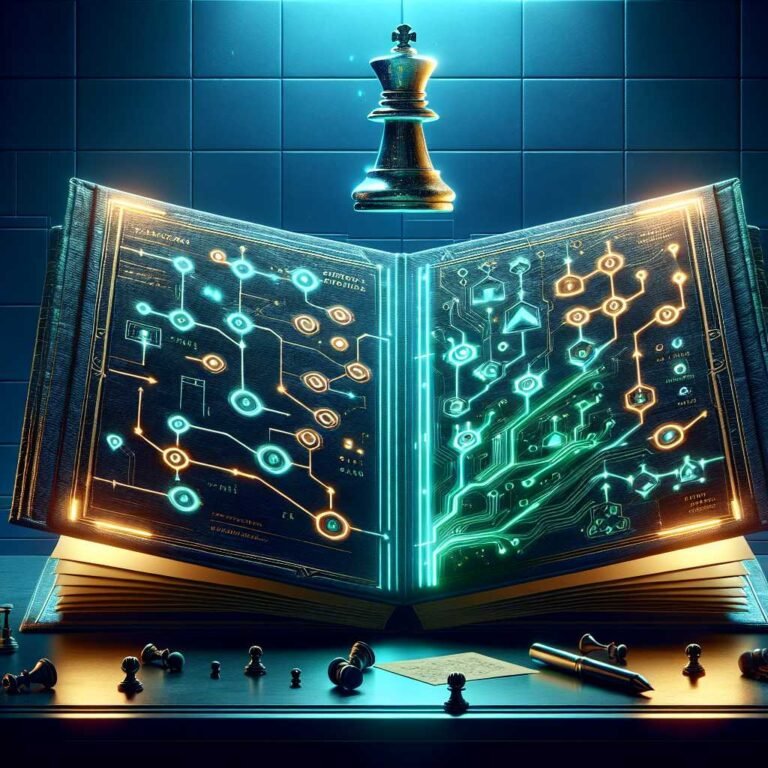The Worlds I See: Why Dr. Fei-Fei Li’s Memoir Is the Must-Read Guide to AI’s Human Future
Artificial intelligence is everywhere—powering our phones, filtering our feeds, and even shaping public policy. But what’s the real story behind this technology? Who are the people guiding its evolution, and what does AI truly mean for our shared future? If you’re looking for answers that go beyond the buzzwords, Dr. Fei-Fei Li’s memoir, The Worlds I See: Curiosity, Exploration, and Discovery at the Dawn of AI, offers a rare, insider’s perspective.
Named one of Barack Obama’s favorite books on AI and featured among the Financial Times Best Books of 2023, this is not just another tech biography—it’s a candid, emotionally charged journey through the mind and work of one of the pioneers who helped define how AI touches our lives today. Let’s dive in to see why this book is resonating with everyone from scientists to everyday readers—and why it should be on your reading list, too.
Who Is Dr. Fei-Fei Li? The Visionary Behind Modern AI
Before we unpack the book, it’s worth understanding the woman behind these pages. Dr. Fei-Fei Li is not just a leading scientist; she’s a transformative force in the world of AI.
- Creator of ImageNet: This massive, annotated image database was the spark that ignited the deep learning revolution in computer vision. In other words, if your phone can recognize your dog in a photo, you have Dr. Li to thank.
- Stanford Professor and Innovator: As co-director of Stanford’s Human-Centered AI Institute, Dr. Li shapes how AI research unfolds with a focus on ethics and humanity.
- Advocate for Diversity in Tech: An immigrant who overcame significant personal and cultural obstacles, Dr. Li champions inclusion across STEM fields.
Her journey—rooted in both hardship and hope—anchors The Worlds I See and makes it far more than a technical treatise.
A Memoir Unlike Any Other: What Sets The Worlds I See Apart
So, what makes this book stand out in a crowded field of AI literature? Here are some key distinctions:
- First-Person Perspective: Rather than offering a detached analysis, Dr. Li tells her story in her own voice. You witness her awe, her doubts, and her unwavering curiosity.
- Science Meets Humanity: While the book explores AI’s nuts and bolts, it’s grounded in the lived experience of an immigrant family struggling to survive in America. This intersection of personal and professional stakes makes the story universally relatable.
- Ethical Clarity: Dr. Li doesn’t shy away from the hard questions. She grapples with both the promise and peril of AI, urging us to keep humanity at the core of all technological progress.
If you’re weary of AI hype or dystopian fear-mongering, this memoir offers a refreshing, nuanced view grounded in reality.
The Immigrant Experience: From China’s Middle Class to American Hardship
It’s easy to look at accomplished scientists and assume they’ve always lived in the land of opportunity. But, as Dr. Li recounts, her family’s journey to the U.S. was anything but easy.
A Portrait of Perseverance: – Struggling in Silence: Dr. Li describes how her family, once middle-class in China, faced poverty and uncertainty upon moving to America. Her mother’s illness added layers of stress and responsibility. – Finding Solace in Science: Despite these hardships, young Fei-Fei found comfort and purpose in physics and math. Her passion for learning became both a lifeline and a launching pad.
Here’s why that matters: The Worlds I See is as much about grit and resilience as it is about algorithms. Dr. Li’s background reminds us that innovation often springs from unlikely places. Her narrative subtly challenges stereotypes about who “belongs” in science and technology.
Demystifying Artificial Intelligence: What The Worlds I See Teaches Us
AI can seem mystifying, even intimidating. But Dr. Li excels at making complex concepts accessible. Through anecdotes and analogies, she breaks down AI’s core ideas in ways anyone can grasp.
AI, Explained Simply
- ImageNet’s Impact: Imagine teaching a child to recognize objects by showing them thousands of pictures. That’s essentially what ImageNet did for computers—giving them the data needed to “see” and classify the world around them.
- Deep Learning: The book likens this process to the way our brains learn from experience. Instead of hardcoding every possible rule, AI systems learn patterns from vast oceans of data.
You don’t need a PhD to understand these explanations. Dr. Li’s writing is clear, engaging, and never condescending. If you’ve ever wondered how your smartphone camera can identify your cat, you’ll find the answer here.
The Human Side of the Algorithm
But the book is about more than just technical feats. Dr. Li argues passionately for keeping empathy at the core of AI development:
“AI is not just about machines; it’s about people and the world we want to create together.”
She makes the case that every algorithm reflects its creators—their values, biases, and intentions. That’s why, she says, diversity and ethics must drive innovation from the ground up.
The Double-Edged Sword: Promise and Peril of AI
One of the book’s central themes is the duality of AI—its immense potential and its real risks.
Extraordinary Possibilities
Dr. Li shares stories of AI transforming health care, improving environmental monitoring, and expanding educational access. She paints a picture of a future where:
- Doctors diagnose diseases earlier with AI-assisted imaging
- Farmers optimize crops using data-driven insights
- Researchers accelerate scientific discovery at unprecedented speeds
These aren’t pipe dreams—they’re happening now.
Dangers on the Horizon
But Dr. Li also sounds a clear note of caution:
- Bias and Inequality: If trained on flawed or biased data, AI systems can reinforce social inequalities. (For more on this, see AI Now Institute’s reports.)
- Loss of Human Agency: Who decides how AI is used, and to what ends? Without thoughtful oversight, technology can outpace ethics and regulation.
She makes a compelling case: It’s up to all of us—not just technologists—to shape AI’s trajectory.
Why Curiosity and Empathy Matter in an Age of Machines
The subtitle—Curiosity, Exploration, and Discovery—isn’t just poetic. Throughout the memoir, Dr. Li insists that curiosity is the engine of both science and social progress.
- Curiosity Drives Innovation: Her winding career path, marked by both setbacks and breakthroughs, underscores the power of asking “What if?” and “Why not?”
- Empathy Anchors Technology: Dr. Li’s caregiving for her ailing mother is woven through her narrative, grounding her work in love and responsibility. She argues that empathy—not efficiency—should be AI’s true north.
Let me explain why this matters: In a world obsessed with speed and automation, Dr. Li reminds us that slow, thoughtful exploration is often where the most meaningful discoveries happen.
What Readers Are Saying: Critical Acclaim and Real-World Impact
You don’t have to take my word for it—The Worlds I See has struck a chord across the globe.
- Barack Obama called it one of his “favorite books on AI.”
- The Financial Times praised its “powerful plea for keeping humanity at the centre of our latest technological transformation.”
- Wired noted Dr. Li is “one of a tiny group of scientists…responsible for AI’s recent remarkable advances.”
Readers from all backgrounds—tech insiders, students, and general audiences—have lauded the memoir for its honesty, humility, and hope. For more perspectives, check out the Goodreads reviews.
Why Should You Read This Book? Key Takeaways
Here’s the bottom line: The Worlds I See is for anyone who wants to understand not just how AI works, but what it means for our shared future.
You’ll learn: – How one scientist’s life story helped shape a technology changing the world. – What AI is—explained clearly, without jargon or hype. – The moral stakes at play as we build tools that could define generations. – The importance of diversity, empathy, and ethics in innovation.
If you care about where technology is headed—and how we can harness it for good—this memoir is essential reading.
Frequently Asked Questions About The Worlds I See and Dr. Fei-Fei Li
1. What is The Worlds I See about?
The Worlds I See is Dr. Fei-Fei Li’s memoir, blending her personal journey as an immigrant and scientist with a clear-eyed look at the development of modern AI. The book explores both the technical and ethical dimensions of artificial intelligence, emphasizing the need to keep humanity at its center.
2. Who should read this book?
Anyone interested in technology, innovation, ethics, or inspiring life stories will find value in this memoir. It’s accessible to readers without a technical background and provides deep insight for those already familiar with AI.
3. Is The Worlds I See suitable for people new to AI?
Absolutely. Dr. Li explains complex concepts in simple, relatable terms, making it an excellent introduction to AI for newcomers.
4. What makes Dr. Fei-Fei Li’s perspective unique?
Her background as an immigrant, her groundbreaking work on ImageNet, and her commitment to ethics and inclusion give her a distinctive, well-rounded viewpoint. She brings both technical expertise and lived empathy to her writing.
5. Where can I learn more about AI ethics and human-centered AI?
For deeper exploration, check out: – Stanford Human-Centered AI Institute – Partnership on AI – AI Now Institute
Final Thoughts: A Blueprint for Human-Centered Innovation
In a time when artificial intelligence is reshaping every facet of our world, The Worlds I See offers both a caution and a call to action. Dr. Fei-Fei Li’s story reminds us that behind every technological leap are countless moments of vulnerability, curiosity, and hope.
Here’s your takeaway: As we build AI’s future, let’s prioritize curiosity, empathy, and inclusion—just as Dr. Li has modeled. If you’re eager to understand the real heart of AI, let this memoir be your guide.
Curious for more insights on the intersection of technology and humanity? Subscribe to stay updated—and let’s continue exploring the worlds we can build together.
Discover more at InnoVirtuoso.com
I would love some feedback on my writing so if you have any, please don’t hesitate to leave a comment around here or in any platforms that is convenient for you.
For more on tech and other topics, explore InnoVirtuoso.com anytime. Subscribe to my newsletter and join our growing community—we’ll create something magical together. I promise, it’ll never be boring!
Stay updated with the latest news—subscribe to our newsletter today!
Thank you all—wishing you an amazing day ahead!
More Literature Reviews at InnoVirtuoso
- Operation Endgame: Do Takedowns and Arrests Matter?
- Book Review: Computer Networking Bible: [3 in 1] The Complete Crash Course to Effectively Design, Implement and Manage Networks
- Breaking Free from the Money Cage: Lessons from ‘The Uncomfortable Truth About Money’
- Review of ‘The Art of Invisibility’ by Kevin Mitnick: Protecting Your Privacy in the Digital Age
- Sideways: The City Google Couldn’t Buy – A Comprehensive Exploration of Josh O’Kane’s Investigative Masterpiece
- Book Review: Cracking the Coding Interview: 189 Programming Questions and Solutions
- XRP 2034: Future Proves Past — An In-Depth Review of Dr. Stanley Quincy Upjohn’s Visionary Financial Forecast
- Book Review & Deep Dive: How Countries Go Broke—Ray Dalio’s “Big Debt Cycle” and What It Means for America







